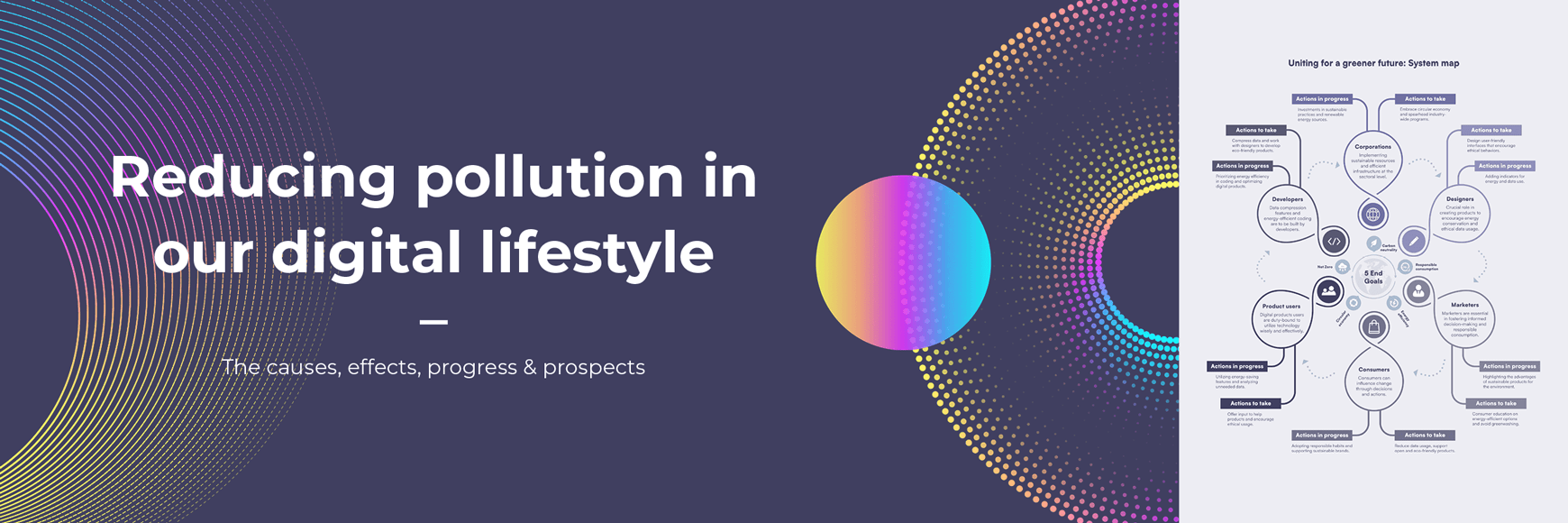The way people store and access data has undergone countless modifications as a result of the fast-paced development of the digital lifestyle. This capstone provides clear insights into digital pollution due to irresponsible storage methods and business strategies.

Digital pollution has increased as a result of careless storage usage, such as amassing excessive photo and video content, habit-forming product development, and persuasion marketing tactics. Users are ensnared in a perpetual state of connectedness due to the addictive nature of the digital environment, which causes anxiety and a fear of missing out. The costs and energy usage of cloud storage and video streaming, as well as the environmental implications of processing power and digital assets like cryptocurrencies and NFTs, are all direct results of digital pollution. In order to avoid these impacts, which include greenhouse gas emissions and climate change, digital pollution must be reduced.
Achieving carbon neutrality and implementing greener alternatives have advanced, but more action is needed from stakeholders including designers, corporations, consumers, marketers, product users, and developers. People living in the contemporary age can conserve the environment and create a sustainable future by embracing eco-friendly purchasing habits, stimulating contemplation through design, encouraging transparency, and encouraging a new digital lifestyle that produces less pollution. Additionally, the research found that consistent efforts to prioritize accountability and openness will pave the road for a greener, more sustainable digital environment and have the potential to reduce digital pollution.